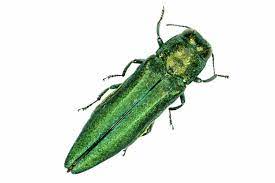
by Bill Schlesinger
Even a century ago, the arrival of pests and pathogens from Europe wreaked havoc on American elm and chestnut trees, leading to their near extinction in many areas of the eastern forests. In the west, exotic annual grasses from Europe largely replaced native bunch grasses, altering the grazing and fire regime over large areas of landscape.
Today, massive transports of people and goods across the oceans accompany the world of economic globalization. We know how little time it took for the COVID virus to spread everywhere from its origins in China. We pay close attention to human disease, but we let the global transport of exotic species, pests, and pathogens proceed with little notice.
A few years ago, Gary Lovett and his colleagues from the Cary Institute of Ecosystem Studies noted that exotic insects accumulated in North American forests at a rate of 2.5 species per year. Luckily only a few of these are problematic, but the recent arrival of the Emerald ash borer has virtually wiped out ash in the eastern U.S. One can easily imagine that the Sugar Maple Borer could do the same to that iconic species, important for production of maple syrup and specialty hardwood.
A new paper by Gyda Fenn-Moltu and others confirm an earlier observation of Lovett’s group. Analyzing nearly two million border-interception records from air, land, and seaports around the world, they found nearly 9000 exotic species, potential pests, were captured, largely from plant and wood products. The horticultural industry is responsible for a large portion of the pests that arrive on exotic plants, and even the plants may themselves prove problematic (e.g., Jubatagrass in California). Wood-packing materials such as pallets and crates hide the arrival of many insects, such as the Emerald ash borer.

All this speaks for the need for widespread and intensive inspections of all goods arriving from overseas. In the U.S., this is the job of APHIS—the Animal and Plant Health Inspection Service of the U.S. Department of Agriculture. We enjoy the products of international transport and should be willing to do our best to retard inadvertent international stowaways that may accompany them. Without border protections against exotic species, the world is likely to become biologically homogeneous and less diverse, which will impoverish us all.
References
Fenn-Moltu, G. and 8. Others. 2022. Alien insect dispersal mediated by the global movement of commodities. Ecological Applications doi: 10.1002/eap.2721.
Lovett, G.M. and 15 others. 2016. Non-native forest insects and pathogens in the United States: Impacts and policy options. Ecological Applications 26: doi: 10.1890/15-1176